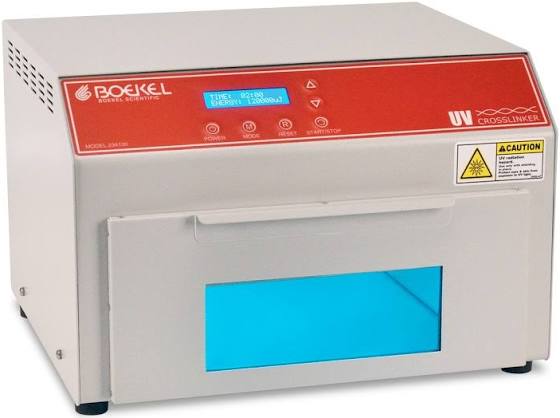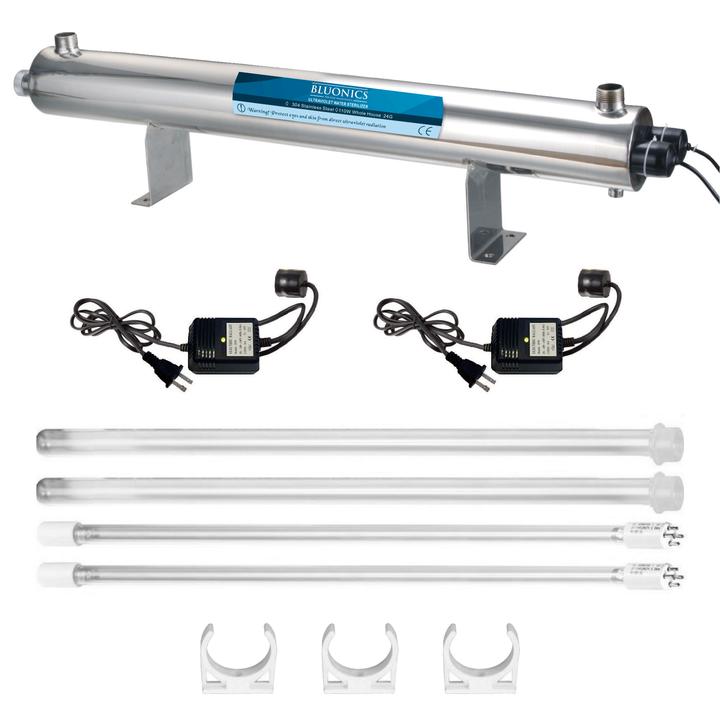I would be incredibly careful pulling a vacuum refilling with O2. O2, heat, and oil can result in some very unpleasant results. When I started looking into this method, I got some pretty serious warnings from some people that have some pretty serious credentials in the O2 space. Your mileage may vary.
We are not quite ready. Setting up a lab using washing machine and probably need a rotovap(as the little alcohol distiller is 4l). I have interested party in CBN right now (small quantity).
What warnings did you get with O2?
Would it be a good experiment to use an Ozone machine? It oxidizes anything it contacts. Maybe put oil under vacuum then pump in ozone? I think it’s O3 and the additional Molecule binds and oxidizes
I do not use heat
Only ethanol as solvent
UV and oxygen
A other member came with the platinum catalyst wich makes a lot of sense
How is the UV applied? Is it 254nm? In a continuous flow water sterilizer like this
Or a UV cross-linking chamber?

I was looking for higher powered UV lasers, but my search came up short.
Also wondering what what happen to hydrogen peroxide and dehydrogenase enzyme in solution, maybe even sonicated. I don’t think alcohol is compatible with that stuff. But I don’t know what I’m talking about.
It s all on the forum
Chemphox
Dec '19
Greetings Roguelab:
I have an interest in UV in my lab. And I have an interest in producing CBN from other cannabinoids. I have some information that will DEFINITELY help you with your search for the right light, and with application of the UV once you get the lamp, with a photocatalyst that works great and is unreactive and is easily filtered out when you are done! And I am going to share the part that cost me 100s of hours of frustration until I figured out what screws everybody up who tries this. So, first things first, your source of 242nm UV light. Here goes: When you are searching, try searching for “UVC lamp”, because the UVC band is 100nm to 280nm. And fluorescent mercury vapor UVC lamps center at 253.7um, they emit 80+% of their light at 253.7um, though they are not that efficient! So at 11nm longer than ideal, they are as close as you will get to the ideal wavelength for what you are wanting the lamp for. And I can tell you from experience that these lamps work for CBN production! I use the 25 watt model. It took me forever to figure this out, but these lamps are only 25% efficient creating light 253.7nm, so, if you buy a UVC lamp that consumes 25 watts of electrical energy, you will only get 5 watts of useful UVC optical power out of it… These “UVC fluorescent lamps” also emit at 180nm, but the quartz envelope does not pass this shorter wavelength, its all coming over at 253.7um. FYI, these are just mercury vapor fluorescent lamps without any rare earth phosphor coated on the inside of the tube, so they emit true at 253.7um from day 1 until they die. So if you search for “UVC lamp” on eBay, you will find a bunch at 253.7nm, very cheap, even pretty powerful, as in 25 watts powerful, lamps. The least expensive tend to 5 watts for less than $4USD, which put out less than 1 watt of useful UVC, up to $21USD for the 25 Watt lamps that put out just shy of 5 watts of useful UVC. UVC LEDs tend to be too high in frequency for our use, with a center of 275nm, though some less honest sellers list these as 265nm, because if you pump them properly, in theory, they emit down to 265nm. I have ordered several LEDs that were supposed to be 265nm, which ALL turned out to be 275nm, and none were powerful enough to produce any reactive oxygen species! REGARDING SAFETY - THIS IS NO JOKE, SERIOUSLY, THE CHINESE SOURCES FOR THE LAMPS ARE GREAT AND RELIABLE and INEXPENSIVE AND DO EMIT RIGHT AT 253.7, BUT THEIR SAFETY GLASSES ARE ABSOLUTELY NO GOOD, AND ARE NOT TO BE TRUSTED, EVER! Sorry to yell, but you may feel like that you are OK without eye protection. You will be mistaken if you assume that. Check out “styropyro” on You tube if you want verification. He does proper testing of Chinese protective glasses for various wavelengths, including UVC, with SCARY results. BUY AND USE GOOD AMERICAN OR EUROPEAN MADE UVC GLASSES, SERIOUSLY! OK, more advice for you and this will save you a BUNCH OF TIME and FRUSTRATION - Regular glass and Nitride glass ABSORB UVC at most of the wavelengths are useful for creating CBN! It took me forever to figure this out! I am embarrassed to tell you that I had to check myself several times before I figured out that the glass was absorbing the UV in the useful range! Now, with that out of the way, my next bit of advice: Titanium Dioxide. TiO2 in situ is a photocatalyst, and on its surface, which is where reactive oxygen species do their thing, and carry out redox reactions in situ.! Yes indeed, this is what you want to do! The TiO2 is opaque and thus can easily be filtered out. TiO2 is pretty much insoluble in anything we here in the forum are generally interested in, solvent wise. Next bit of advice: A QUARTZ JACKETED reactor vessel is the shiznet and BECAUSE GLASS ABSORBS UVC, IT IS THE ONLY MATERIAL YOU WANT TO USE FOR THE REACTION! The quartz passes UVC at 253.7um without power loss. So you put your UVC lamp in the part of the reactor where you would normally put the chemicals you are working on. And you use a cheap Bronze Gear pump, $24USD on theBay, because it handles very viscous fluids easily and without much of any corrosion etc. And you get a variable 12VDC power supply of the sort used for the new style RC vehicles, because the motor on these pumps is the same high tech type used on RC vehicles. And you put the cannabinoid solution, in a bucket mixed with the TiO2 and set it up so that your solution of cannabinoids ‘n’ TiO2 just cycles around and around and around the reaction chamber of your quartz vessel where you put your UVC lamp`, over and over until you have the CBN at the max level. I hope that I have saved you a bunch of time. If I did please let me know! If I can give you more info, just let me know and I will do my best to assist you. But you seem to be among the more capable in this forum, so I think you will discover some new things, and if you do, please do share those with me, as I am always wanting to up my game in terms of efficiency! Cheers from Santa Barbara, CA USA! ![]()
26
This is a gold nugget post of this treasure chest forum ![]() enjoy
enjoy
What about a hydrogen acceptor? One would need hydrogen to be accepted, as the compounds is oxidized. I figured a acid would be needed.
I already mentioned this elsewhere, but wouldn’t a quartz coil circulating the solution (with suspended catalyst) around the lamp be more convenient for treating large volumes homogeneously? ![]()
Ha thinking deeper, maybe a wire bearing the catalyst of interest could be drawn inside the coil. ![]()
Might be an option indeed
But treuth I don t work on cbn that much lately my starting point has always been thc and that has more valeu over here in Europe than cbn
At the moment
Stud!
Hanovia has the craziest high intensity UV lights and UV reactors.
What is the value of a sulfur CBN conversion where there is no stench during conversion and the smell is removed from the oil afterwards? Crude oil (right out of the pot) is 50-70% CBN; chromatography and a proprietary method can take it to higher potencies.
The glg sulphur sop has about that yield and has been open sourced
@Kingofthekush420 he’s asking the value of performing the process odorless…which we both know is desirable considering the severity of the noxious odor experienced when running the existing GLG sulphur conversion.
With a proper gas trap there shouldn’t be any smell to begin with
Removing the Sulphur smell from the cbn is easy with copper
What sort of gas trap have you found to have no smell?
Perhaps that smell is H2S, one of the most corrosive atmospherique polutent. A bentonite trap (clays again!) should work.
Is anyone interested in a safe CBN conversion from THC? I can show you how to make d8 from CBD and then convert it to CBN. Not looking to give away free information.
Can you share your COA’s for the converted material? what kind of yields are you getting? Are you going to isolate?
